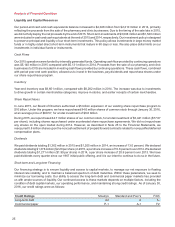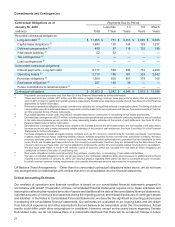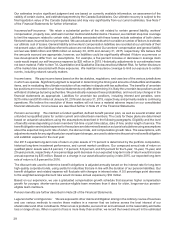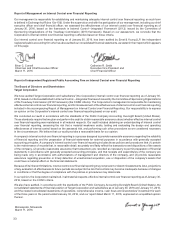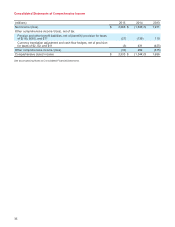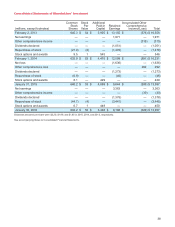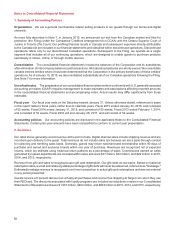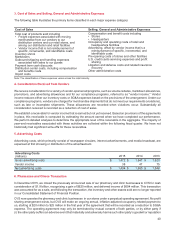Target 2015 Annual Report Download - page 36
Download and view the complete annual report
Please find page 36 of the 2015 Target annual report below. You can navigate through the pages in the report by either clicking on the pages listed below, or by using the keyword search tool below to find specific information within the annual report.
Item€7A.€€€€Quantitative and Qualitative Disclosures About Market Risk
At January€30, 2016, our exposure to market risk was primarily from interest rate changes on our debt obligations,
some of which are at a LIBOR-plus floating-rate. Our interest rate exposure is primarily due to differences between
our floating rate debt obligations compared to our floating rate short term investments. At January€30, 2016, our floating
rate short-term investments exceeded our floating rate debt by approximately $1,758 million. Based on our balance
sheet position at January€30, 2016, the annualized effect of a 0.1 percentage point decrease in floating interest rates
on our floating rate short-term investments, net of our debt obligations, would decrease earnings before income taxes
by approximately $2 million. In general, we expect our floating rate debt to exceed our floating rate short-term
investments over time, but that may vary in different interest rate environments. See further description of our debt
and derivative instruments in Notes€20 and 21 of the Notes to Financial Statements.
We record our general liability and workers' compensation liabilities at net present value; therefore, these liabilities
fluctuate with changes in interest rates. Based on our balance sheet position at January€30, 2016, the annualized
effect of a 0.5€percentage point decrease in interest rates would be to decrease earnings before income taxes by
$9€million.
In addition, we are exposed to market return fluctuations on our qualified defined benefit pension plans. The value of
our pension liabilities is inversely related to changes in interest rates. A 0.5€percentage point decrease to the weighted
average discount rate would increase annual expense by $32€million. To protect against declines in interest rates, we
hold high-quality, long-duration bonds and interest rate swaps in our pension plan trust. At year-end, we had hedged
55€percent of the interest rate exposure of our funded status.
As more fully described in Note€15 and Note€27 of the Financial Statements, we are exposed to market returns on
accumulated team member balances in our nonqualified, unfunded deferred compensation plans. We control the risk
of offering the nonqualified plans by making investments in life insurance contracts and prepaid forward contracts on
our own common stock that offset a substantial portion of our economic exposure to the returns on these plans. The
annualized effect of a one percentage point change in market returns on our nonqualified defined contribution plans
(inclusive of the effect of the investment vehicles used to manage our economic exposure) would not be significant.
There have been no other material changes in our primary risk exposures or management of market risks since the
prior year.
31






